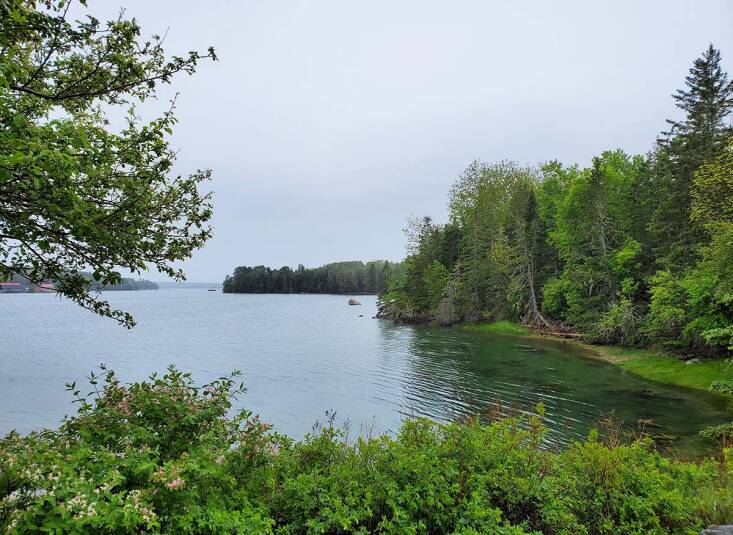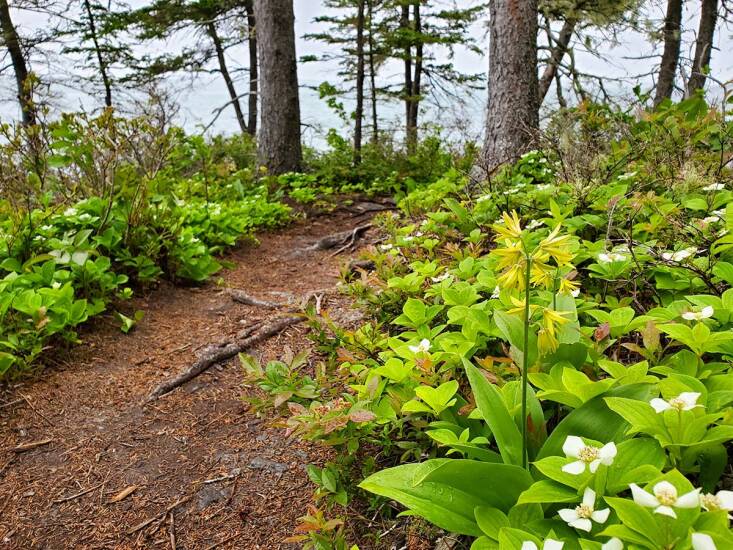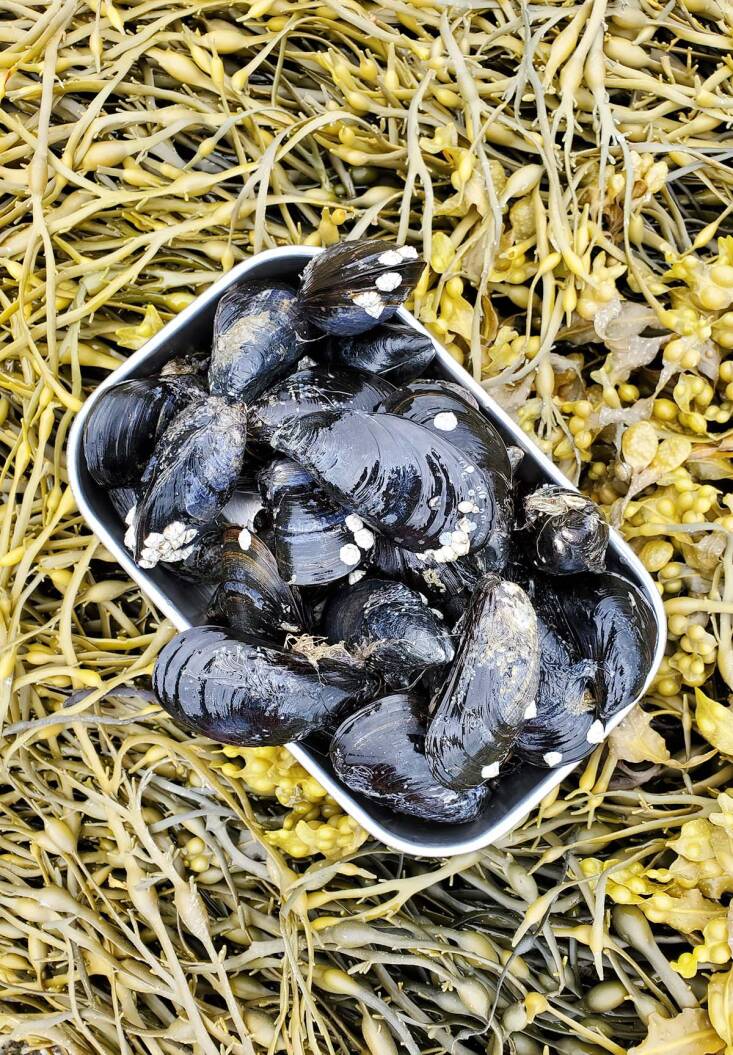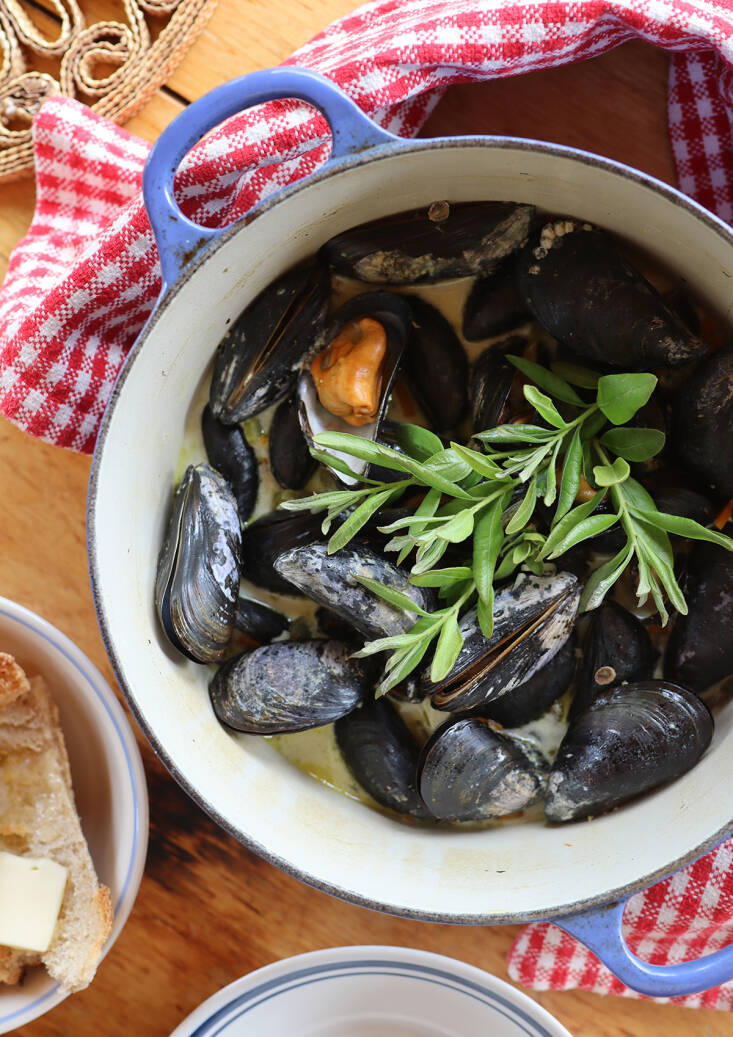Maine in May is where we long to be. In the worst days of the pandemic’s first year, my husband and I looked north towards Maine for a coastal escape. I had never been. Good friends and former New York City neighbors guided us from our Brooklyn to theirs: Brooklin, Maine. “Skip the touristy towns,” they said. “Visit Downeast.” So we did, arriving on the beautiful Blue Hill Peninsula for the first time. It was fall. We fell in love with the rising and falling tides of the inlet where we rented a cottage, the forests on the water, fragrant with fir and hemlock, the old apple trees, and fields of lowbush blueberries turning crimson. We returned to the city with crates of windfall apples to make cider. And booked another trip the day we got home, this time for May.
Visit with us: Downeast in May.
Photography by Marie Viljoen.

We met a different Maine in May: The apple trees had just leafed out, fields of lupines were in bloom, bees buzzed in lush bunches of lilac blossom. Every night we fell asleep to the spring peepers in the pond behind the cottage peeping their tiny hearts out, and every morning we woke to loons calling across the misty water. May in Maine is like sinking into the softest of mossy beds, taking a deep breath, and exhaling to realize that you may have been holding your breath for a long (long) time. And if you are a gardener and love plants, or pay attention to all things foraging, immersing yourself in this landscape is heaven. The only thing separating springtime Maine from actual paradise is ticks. Many ticks. (We walked with socks tucked into treated pants and eyes peeled for the arachnids poised on grass-tips.)

Harriman Point is a 138-acre preserve on the Blue Hill Peninsula near Brooklin, under the stewardship of the Maine Coast Heritage Trust. It offers easy and enthralling hikes. With quiet paths through forests that open onto gravel beaches, in May the woodland floor is an intricate tapestry of blueberry blossoms, bunchberry (Cornus canadensis), and blue-bead lilies (Clintonia borealis).

The floral carpet is a refresher in garden design. Bunchberries are an ideal groundcover in a natural woodland garden with high or dappled shade. Their vivid red fruits succeed the flowers in fall.

On slender stems beneath hemlocks and pines, pink lady’s-slipper orchids (Cypripedium acaule) grow in quiet, breathtaking groups. They take years to mature from seed and reproduce only in a complex mycorrhizal association with a fungus that provides nutrients to the germinating seeds and seedlings. In exchange, the mature plants return sugars to the fungus.

The delicate beauty of starflowers (Trientalis borealis) makes them another good choice for gardeners who appreciate detail and who have plenty of high shade, but they also flower well on woodland edges in full sun.

The olfactory landscape of these woodlands is as rich as the textures and topography: The green-tinted air smells like Christmas, thanks to the firs; the hemlocks are aromatic when their needles are crushed in passing; and the knee-deep moss smells like fresh snow. Everywhere, lichens are cleaning the already-clean air.

And there is food for the passing grazer: Bracken fern fiddleheads shooting straight up from the duff are tender enough to snap between two fingers. Pteridium aquilinum is the most widely distributed fern globally, and an important food in many cultures. I collect a handful wherever I see its crosiers, to blanch at home, and dip in drawn butter or a good soy sauce.

To extend the pleasure of a too-brief vacation, I bottle it, in a home-made vermouth. Catching the scent of aromatic ingredients like fir and spruce is easy if you have some Mason jars or rental-cottage glassware. Submerge the botanicals in decent vodka, leave for 24 to 48 hours, and strain before blending into a white wine base for a place-specific aperitif.

I add the strained vodka infusions to a white wine aromatized overnight with floral ingredients (in this case, lilac and beach rose petals). Once the hard liquor infusions are added to taste, the leftovers make very versatile bitters. Downeast Vermouth, Downeast Bitters. Open those bottles, and you release the scent of a time and place.

Bayberry (Morella pensylvanica) bushes flanked our waterside cottage, and I made ample use of their aromatic leaves.

Dinner plans were inspired by what we saw out the window: Low tide mussel-foraging gave us fat bivales (check local notices about clean water and safe collecting; mussels are filter feeders and can absorb toxic algal blooms or other pollutants).

Steamed open in a broth of local cream, just-made vermouth, and bayberry leaves, the shellfish were memorably good.

Local fish vendors tempted us with steamer clams, cod, and, of course lobster. We feasted well, often indoors on nights that turned chilly.

A wild walk that skirted an abandoned farm field where a clump of old lilacs were in bloom yielded a sweet memento. As we drove home with a bunch of the perfumed flowers we passed a roadside stand selling honey on the honor system. A large bottle of raw honey was acquired, payment stashed in the designated jar. Back at the cottage I picked the flowers from their stems and soused them in the liquid gold. After two days I strained it.

Exactly a year later, we still have one jar of lilac honey left, eked out for special guests on the forage-picnics I create in the other Brooklyn. But our next trip has been booked for many months, already, and this time for a little longer. May in Maine has captured our hearts, and soon, we will be back.
To learn about our new book on Maine homes, see:
mainFor more stories on Maine, see:
- Landscape Architect Visit: Clamshell Alley on the Coast of Maine
- After the Hurricane: The Resurrection of a Wild Garden in Maine
- 11 Garden Ideas to Steal from the Coast of Maine









Have a Question or Comment About This Post?
Join the conversation